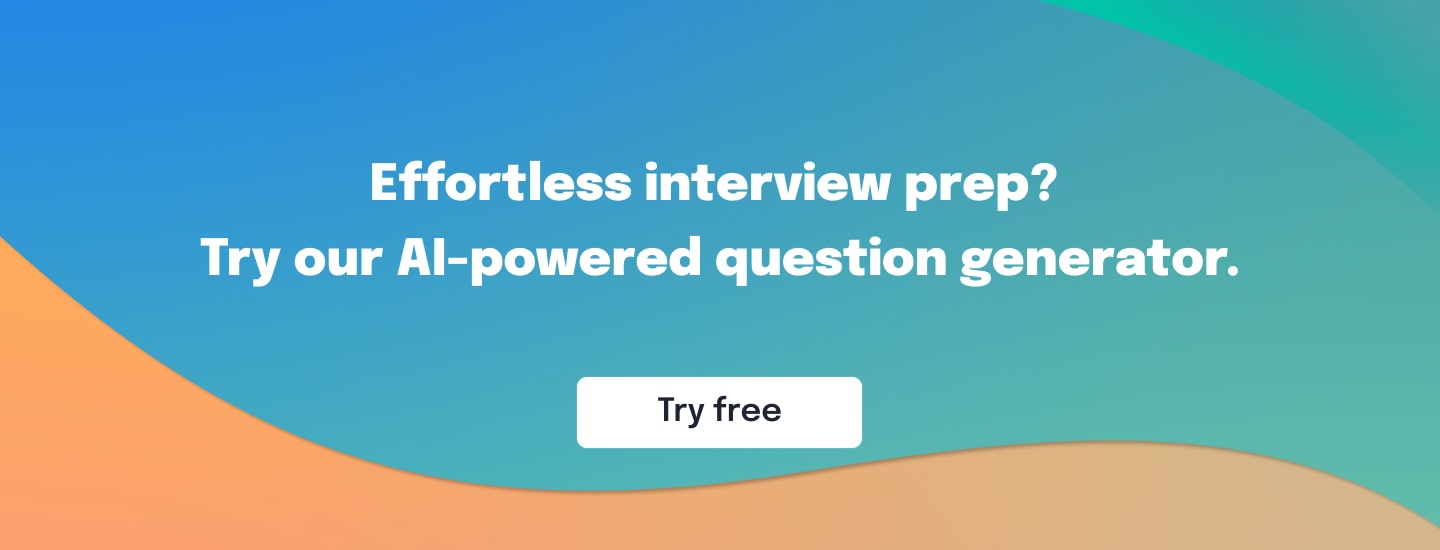When you’re on the hunt for the perfect Senior Python developer, you probably know how tough it can be. There are lots of resumes out there, but finding the right fit—someone who’s not only a tech whiz but also a great cultural match—can feel like searching for a needle in a haystack. But the challenge doesn’t end there.
Conducting interviews that really help you figure out if a candidate is up to the job can be just as tricky. We’ve been there, too. Our experience and data show that finding the right interview questions to spot a top-notch Senior Python developer is no walk in the park.
That’s why we’ve put together this article. We’ve been through the hiring ringer and know the questions you need to ask. These questions go beyond the basics and get to the heart of Python development skills, real-world experiences, and how candidates approach coding challenges. We believe this resource will make life easier for hiring managers like you and give job seekers a clearer picture of what it takes to be a Senior Python developer.
Table of Contents
1: Can you describe a complex Python project you’ve worked on, highlighting any performance optimization techniques you employed?
Expected Answer: I once worked on a web scraping project where I used async/await for concurrent HTTP requests, optimized CPU-bound tasks using multiprocessing, and utilized caching to reduce network calls.
Explanation: This question assesses the candidate’s ability to handle complex projects and optimize Python code for performance.
1.1: Could you provide specific examples of profiling tools or techniques you used to identify performance bottlenecks in the project?
Expected Answer: In that project, we used Python’s built-in `cProfile` and `timeit` modules extensively. `cProfile` helped us pinpoint slow functions, while `timeit` allowed us to measure the execution time of specific code snippets.
Explanation: The candidate is being assessed for hands-on experience with performance optimization tools, which is essential in complex projects.
1.2: Did you encounter any trade-offs between optimization and code maintainability? If so, how did you balance them?
Expected Answer: Yes, there were trade-offs. In some cases, we had to sacrifice code readability for performance. To balance this, we heavily commented the optimized sections and used meaningful variable names to make the code maintainable.
Explanation: It probes the candidate’s ability to make informed decisions regarding code optimization and maintainability, a skill crucial for senior developers.
2: Have you worked with any Python web frameworks like Django or Flask? Can you discuss a challenging problem you encountered and how you solved it?
Expected Answer: In a Django project, we faced scalability issues due to database bottlenecks. We resolved it by implementing database sharding and optimizing query performance.
Explanation: Assessing their experience with web frameworks and problem-solving abilities in real-world scenarios is important for a senior developer.
2.1: Could you elaborate on the security measures you implemented in the project, especially in terms of protecting against common web vulnerabilities?
Expected Answer: Security was a top priority. We used Django’s built-in security features like CSRF protection, SQL injection prevention, and input validation. Additionally, we conducted regular security audits and kept dependencies up-to-date.
Explanation: This follow-up question evaluates the candidate’s knowledge of web security, a critical aspect of web development.
2.2: How did you handle database migrations and version control in your web projects, and did you encounter any database schema evolution challenges?
Expected Answer: We used Django’s built-in migration system. As the project evolved, we faced schema migration challenges, particularly when modifying existing tables. We handled these by creating data migration scripts to preserve existing data.
Explanation: It explores the candidate’s experience with database management and schema evolution, which is crucial for maintaining web applications in production.
3: How would you design a RESTful API in Python, and what libraries or frameworks would you use?
Expected Answer: I would use Flask or FastAPI to create a RESTful API, implement CRUD operations with appropriate HTTP methods, and use libraries like SQLAlchemy for database interaction.
Explanation: Here the hiring manager evaluates candidate’s knowledge of API design and familiarity with Python web frameworks.
3.1: Can you explain the concept of versioning in RESTful APIs and describe how you would implement it to ensure backward compatibility?
Expected Answer: API versioning is important for maintaining compatibility. We would typically include the version in the URL, such as `/api/v1/resource`, and use URL routing or middleware to handle requests to the appropriate version.
Explanation: This follow-up question assesses their understanding of API design principles, specifically versioning, which is crucial for API longevity.
3.2: When designing APIs, how do you ensure proper documentation for developers who will consume the API? Any specific tools or practices you follow?
Expected Answer: Documentation is vital. We often use tools like Swagger or Sphinx, generating documentation directly from code comments. It’s important to keep documentation up-to-date and comprehensive to facilitate API adoption.
Explanation: It explores their approach to API documentation, a crucial aspect of API development for collaboration and adoption.
4: Discuss your experience with data processing in Python. Have you used libraries like Pandas, NumPy, or Dask for handling large datasets?
Expected Answer: Yes, I’ve used Pandas for data manipulation and analysis. In one project, I processed millions of records with Pandas and optimized performance using vectorized operations.
Explanation: Assessing their expertise in data processing is crucial, especially if your projects involve data analysis or manipulation.
4.1: Could you share a specific example where you optimized data processing with Pandas for a memory-intensive operation? How did you manage memory constraints?
Expected Answer: Certainly. In one project, we used Pandas to process a large CSV file that couldn’t fit into memory. We read the data in chunks, processed each chunk, and aggregated the results. This approach allowed us to handle the data efficiently without running out of memory.
Explanation: This follow-up question delves into the candidate’s practical experience in optimizing memory-intensive data processing, a common challenge in real-world projects.
4.2: Have you worked with real-time data processing or streaming data in Python, using libraries like Apache Kafka or Apache Spark Streaming? If so, can you describe a scenario and how you handled it?
Expected Answer: Yes, I’ve worked with Apache Kafka for real-time data processing. In a project, we integrated Kafka to ingest and process streaming data from IoT devices. We used Kafka consumer groups and Python clients to handle data efficiently.
Explanation: This question explores the candidate’s experience with real-time data processing, which is becoming increasingly important in various domains.
5: Have you worked with asynchronous programming in Python, and can you explain when and how you would use it?
Expected Answer: Yes, I’ve used asyncio to handle concurrent I/O operations. For example, in a web application, I used it for handling multiple requests simultaneously without blocking the event loop.
Explanation: Understanding asynchronous programming is important, especially in scenarios requiring high concurrency and responsiveness.
5.1: When implementing asynchronous code, what are some common pitfalls you’ve encountered, and how do you avoid them?
Expected Answer: One common pitfall is blocking operations within an async function, which can cause event loop contention. To avoid this, we use async-friendly libraries and techniques like asyncio’s `await` keyword and `asyncio.gather()` for concurrent operations.
Explanation: Here, we can assess the candidate’s experience in handling potential challenges and bottlenecks in asynchronous code.
5.2: Could you provide an example of a project where you improved application responsiveness using asynchronous programming, and how did it impact user experience?
Expected Answer: Certainly. In a web application, we used asyncio to parallelize I/O-bound operations, such as database queries and external API requests. This significantly reduced response times, resulting in a much-improved user experience with faster page loads.
Explanation: This question explores the candidate’s practical experience in using asynchronous programming to enhance user-facing applications, emphasizing the impact on performance and user satisfaction.
6: Describe a situation where you had to integrate Python with a non-Python system or service, such as a messaging queue or a RESTful API.
Expected Answer: In a microservices architecture, I integrated Python services with RabbitMQ for asynchronous communication, using the `pika` library for message handling.
Explanation: It checks their experience with system integration, a common requirement in modern software development.
6.1: How did you handle error handling and retries when integrating with external services, ensuring robustness and reliability?
Expected Answer: We implemented a retry mechanism with exponential backoff for network-related errors. Additionally, we used proper logging and monitoring to detect and investigate integration failures promptly.
Explanation: With this question, we can assess the candidate’s approach to building resilient integrations, which are crucial for system reliability.
6.2: In an integrated system, what strategies do you employ to ensure data consistency and prevent data loss or duplication when dealing with unreliable external services?
Expected Answer: We often use idempotent operations and transactional semantics. For example, when interacting with a message queue, we ensure that processing a message is an idempotent operation so that reprocessing doesn’t lead to data inconsistencies.
Explanation: It explores the candidate’s understanding of data consistency and reliability in distributed systems, which is essential for robust integrations.
7: Can you explain the concept of test-driven development (TDD) in Python and provide an example of how you’ve used it in your projects?
Expected Answer: TDD involves writing tests before code. I’ve used tools like pytest to follow TDD, ensuring code quality and reliability. For example, in a recent project, I wrote unit tests before implementing new features.
Explanation: Evaluating their knowledge of TDD reflects their commitment to producing robust and maintainable Python code.
7.1: How do you handle testing scenarios where external dependencies, like databases or APIs, are involved? Do you use mocking or stubbing, and can you provide an example?
Expected Answer: Yes, in TDD, we often use mocking or stubbing to isolate the code under test. For instance, when testing a service that interacts with a database, we use libraries like `unittest.mock` to mock database calls and control their behavior during testing.
Explanation: This question examines the candidate’s knowledge of testing techniques in scenarios involving external dependencies, which is common in real-world applications.
7.2: Can you elaborate on how TDD contributes to code maintainability and extensibility over the long term, based on your experience?
Expected Answer: TDD leads to better-designed code with clearly defined interfaces. In practice, this means that as the project evolves, it’s easier to make changes without introducing regressions, leading to more maintainable and extensible codebases.
Explanation: Here, we can evaluate the candidate’s understanding of the long-term benefits of TDD, emphasizing its impact on code quality and sustainability.
8: How do you manage dependencies in a Python project, and what is the significance of a `requirements.txt` file?
Expected Answer: I use virtual environments to isolate project dependencies and maintain a `requirements.txt` file to specify package versions. This ensures reproducibility and avoids conflicts.
Explanation: This question examines their proficiency in dependency management, a critical aspect of Python development.
8.1: Could you describe the advantages and disadvantages of using virtual environments compared to system-level Python installations when managing project dependencies?
Expected Answer: Virtual environments provide isolation, ensuring that project dependencies don’t interfere with system-level packages. However, they can consume extra disk space and require additional setup. It’s a trade-off between isolation and convenience.
Explanation: It explores the candidate’s understanding of dependency management options and their ability to make informed choices.
8.2: In a team environment, how do you coordinate and manage the `requirements.txt` file to ensure consistency and reproducibility across different developers’ environments?
Expected Answer: We typically use a version control system like Git to track changes in the `requirements.txt` file. Additionally, we encourage developers to regularly update it when adding or updating dependencies, and use tools like `pip-tools` to manage dependencies consistently.
Explanation: This question assesses the candidate’s ability to maintain consistency and reproducibility in collaborative Python projects, a key consideration in team development.
9: Have you worked on any machine learning or data science projects in Python? Can you discuss a specific project and the libraries you used?
Expected Answer: Yes, I’ve worked on a sentiment analysis project using TensorFlow and NLTK. We used pre-trained models and fine-tuned them for our specific task.
Explanation: Assessing their experience in machine learning and data science projects, if relevant to your organization, is important.
9.1: When working on machine learning projects, how do you approach model evaluation and selection, and do you have experience with techniques like cross-validation?
Expected Answer: In machine learning, we use techniques like k-fold cross-validation to assess model performance. This helps in selecting the most suitable model and avoiding overfitting. It’s an essential step in ensuring the model’s generalization ability.
Explanation: This follow-up inquiry delves into the candidate’s proficiency in model evaluation and selection, a pivotal aspect of machine learning projects.
9.2: In data science projects, data cleaning and preprocessing often consume a significant amount of time. Can you share strategies or tools you’ve used to handle messy data effectively?
Expected Answer: Data cleaning is indeed a significant part. I’ve used libraries like Pandas and regular expressions for data cleaning and preprocessing. Additionally, visualization tools like Matplotlib and Seaborn help identify outliers and anomalies.
Explanation: Here, we assess the candidate’s hands-on experience in data preprocessing, a fundamental stage in the realm of data science projects.
10: In your experience, what Python coding standards and best practices do you follow to ensure code quality and maintainability?
Expected Answer: I adhere to PEP 8 for code style, use docstrings for documentation, and follow the DRY (Don’t Repeat Yourself) principle to ensure clean and maintainable code.
Explanation: This query sheds light on the candidate’s dedication to producing well-structured, comprehensively documented, and easily maintainable Python code—a cornerstone of sustained project success.
10.1: How do you enforce coding standards and best practices within a development team, and what role do code reviews play in this process?
Expected Answer: Code reviews are crucial. We use automated tools like linters to catch style issues early. During code reviews, team members provide feedback on adherence to coding standards and best practices, ensuring consistency and quality.
Explanation: In this subsequent question, we explore how the candidate fosters code quality and consistency, particularly within a collaborative development environment.
10.2: Can you share a specific example where adhering to coding standards and best practices in Python resulted in a more maintainable and bug-free codebase?
Expected Answer: Certainly. In a project, strict adherence to PEP 8 and consistent naming conventions made it easier for team members to understand and modify each other’s code. This reduced the likelihood of introducing bugs during maintenance.
Explanation: This inquiry examines the tangible advantages of adhering to coding standards and best practices, emphasizing their substantial influence on both code quality and long-term maintainability.
Final thoughts
In this discussion, we’ve explored ten fundamental questions to consider when interviewing Python developers. These questions serve as a valuable tool to assess a candidate’s technical prowess, problem-solving acumen, eagerness to learn, and commitment to excellence. However, it’s important to emphasize that interviewing is a multifaceted process.
While technical competence is crucial, it’s equally vital to gauge a candidate’s ability to collaborate effectively, communicate within your team, and align with your organization’s culture. These interview questions lay a strong foundation, but remember to adapt them to your company’s unique requirements.
For a more customized approach, contemplate leveraging AI assistants like i1, tailored to streamline your talent vetting process. With its deep learning capabilities, you can construct an interview process aligned with your organization’s specific standards and values, offering you greater control in finding the ideal Python developer.
As you embark on this journey, keep in mind that selecting the right candidate is an adventure. These questions are your compass, but trust your instincts and ensure the candidate aligns with your company’s mission and values. Best of luck with your Python developer interviews!






